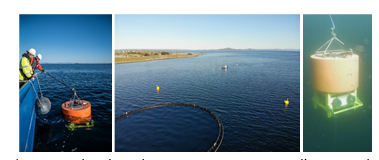USING INNOVATIVE e-DNA BASED APPROACH TO TACKLE CHALLENGES AND EVALUATE THE FOOTPRINT OF NORWEGIAN SALMON AQUACULTURE
In Norway, the aquaculture industry has a significant socioeconomic value. The planned intensification of fish production from aquaculture requires improvement of production sustainability to respond to increased environmental pressure. Today, parasitism and diseases causing significant fish production loss, are mitigated by methods causing welfare and environmental concerns. Production in larger offshore farms is envisioned, but the consequences for the offshore marine life will need documentation. Also, the methods used to monitor the footprint for smaller production sites may need a revision for offshore production. Overall, there is a need to document effects of and tolerance limits for impact from present and future aquaculture using timely methods that can address these important issues. Because of versatile applications, environmental DNA (eDNA) monitoring is seen as one way to inform about critical occurrence of pathogens to the farm operators and to monitor the footprint on sediment and water close to aquaculture installations. eDNA monitoring, particularly in marine environments, requires quite extensive logistics that increases the sampling cost. It is therefore an expressed interest in developing automated concepts for aquatic eDNA monitoring. In parallel, both manual and automated eDNA concepts need to prove equally robust as standard taxonomy-based methods for monitoring of biodiversity and disease pathogens. The Environmental Sampling Processor (2G-ESP, developed at MBARI, USA. See illustration), is a fully automated sampling and processing platform for in-situ detection and quantification of several agents in water. Sample archiving is also possible. The results can be remotely communicated to decision-makers within 1-day. ESP was tested at 6 m depth, downstream a fish farm in western Norway for 3 weeks. Target organisms were the salmon louse (Lepeophtheirus salmonis) and the amoebic gill disease (AGD) pathogen (Paramoeba peruransthe). eDNA from salmon fish in the pens was used as a “positive control” for the ESP and to infer about current direction to the ESP. Overall, both in situ detection and quantification of eDNA fluctuated over the period: AGD and fish eDNA were detected in some samples, salmon lice was not. Several variables may explain this discrepancy. The archived samples are now being processed as well. New compact and portable devices such as the Biomeme qPCR device and the Oxford Nanopore mini-sequencer will now be evaluated for specific biological indicators, disease-agents, and marker gene biodiversity of taxonomic groups for footprint community assessment around farms. eDNA -based monitoring and semi- to full automatization of procedures may change the way monitoring of Norwegian salmon farm to support more sustainable production in the future
